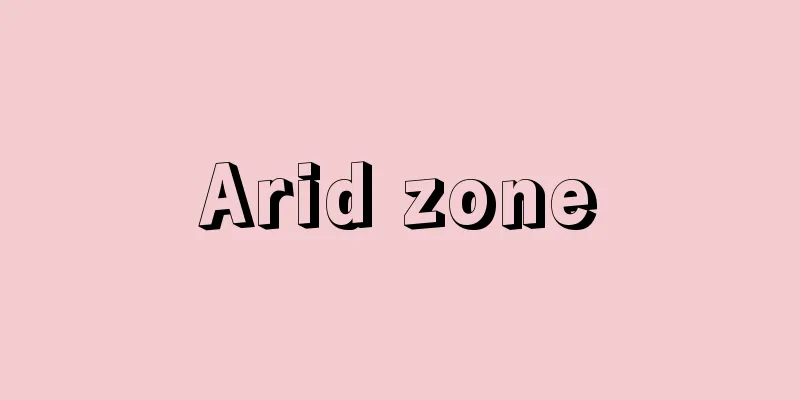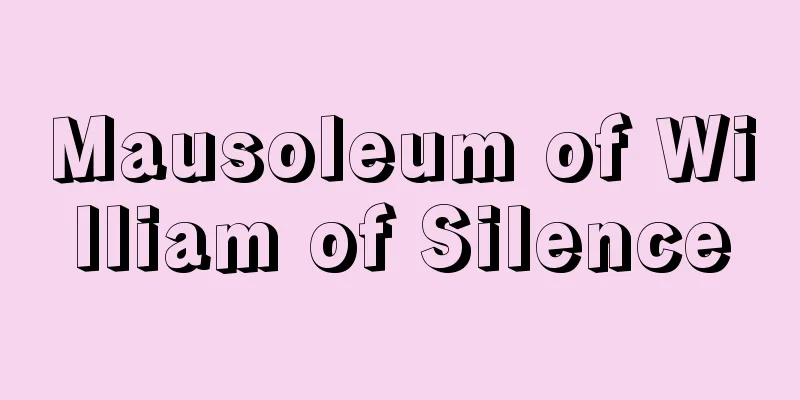Urinary Stones

|
What are urinary stones? Tests to detect urinary stones Various treatments for urinary stones Prevention of recurrence of urinary stones What are urinary stones? ◎Stone-like lumps form in the urinary tract The urinary tract, which is the path through which urine passes, consists of four parts: the urinary tract portion of the kidney (calyx and renal pelvis), ureter, bladder, and urethra, and stones that form in any of these parts are called urinary tract stones. Depending on where they form, they are called kidney stones, ureteral stones, bladder stones, urethral stones, etc. Urinary stones have been found in the bladders of ancient Egyptian mummies, and can be said to be an ancient disease that has existed throughout human history. Before the 19th century, most stones were in the lower urinary tract, such as the bladder and urethra, but in the 20th century, there was a gradual increase in stones in the upper urinary tract, such as the kidneys and ureters. In particular, there was a sharp increase in upper urinary tract stones after World War II, and currently, 95% of urinary tract stones in developed countries are upper urinary tract stones. In Japan, urinary stones occur two to three times more often in men than in women, and by age, they are most prevalent among young adults in their 30s to 50s. It has also been reported that the lifetime incidence rate of urinary stones (the proportion of people who develop the disease in their lifetime) is about 1 in 20 people. ◎80% of stones are calcium stones . Kidney stones occur when some of the components in urine turn into tiny crystals, which grow and clump together, accumulating in the urinary tract. Stones that are composed of calcium oxalate, calcium phosphate, or a mixture of these are called calcium stones, and about 80% of all stones are calcium stones. The remaining 20% are stones composed of uric acid, magnesium ammonium phosphate, cystine, etc. Causes of kidney stones include urinary tract obstruction, urinary tract infection, hormonal abnormalities (hyperparathyroidism, Cushing's syndrome, etc.), metabolic abnormalities (hyperuricemia, gout, cystinuria, hypercalciuria, etc.) and the effects of medications (steroids, vitamin D, medications for glaucoma). ◎ Characterized by intense pain A typical upper urinary tract stone (stone that forms in the kidneys, ureters, etc.) causes sudden, intense pain from the back to the side (renal colic), and the patient may break out into a cold sweat or vomit. Renal colic often strikes intermittently, and once a colic attack begins, the patient will writhe in agony and feel helpless, but will feel fine once the pain subsides. Tests to detect urinary stones ●Urine test When a stone moves, it can damage the urinary tract, causing hematuria that can be seen with the naked eye, but most hematuria caused by stones in the upper urinary tract can only be seen with a microscope. Therefore, in diagnosing urinary stones, it is important to test the urine to confirm the presence of hematuria. ● X-ray examination Most urinary stones absorb X-rays, so the stone area can be seen as a shadow on a plain abdominal X-ray. However, X-rays pass through uric acid and cystine stones, so the stones cannot be seen. These are called X-ray negative stones. X-ray examination in which a contrast agent is injected into the body is called X-ray contrast examination, as opposed to plain X-ray examination. If this contrast agent is injected into a vein and an image is taken where the contrast agent flows from the renal pelvis to the ureter (this is called an excretory pyelogram), the shadows seen on the plain X-ray examination can be clearly identified as urinary stones. Also, even X-ray negative stones can be confirmed as stones by performing a urinary tract X-ray examination. Ultrasound examination: When an abdominal ultrasound is performed on patients with colic attacks, it is often found that the renal pelvis and ureter containing the stone are enlarged. ●Blood tests: Patients who have repeated urinary tract stones or patients with many stones in both urinary tracts may need to undergo blood tests because there may be abnormalities in hormone secretion or metabolism due to hyperparathyroidism or Cushing's syndrome, a disease of the adrenal glands. In hyperparathyroidism, a large amount of parathyroid hormone is secreted from the parathyroid glands, small organs (about the size of a grain of rice to azuki bean) located behind the thyroid gland. This acts on the bones, kidneys, and intestines, causing abnormally high levels of calcium in the blood and urine. Cystinuria is a congenital metabolic disorder in which a large amount of cystine, an amino acid, is excreted in urine, causing stones to form. This disease is hereditary, and is characterized by the fact that multiple patients can be found within the same family. If a child has urinary stones, the possibility of cystinuria is suspected. Various treatments for urinary stones ● Spontaneous excretion Approximately 80% of urinary stones are naturally excreted. If the stone is up to 1cm in size on an X-ray, medication is used to relax the ureter and make it easier for the stone to pass, in the hope that it will be expelled naturally. In addition, patients should be encouraged to drink plenty of fluids to increase urination, and to do exercise such as jumping rope or climbing stairs to help expel the stones. ● Extracorporeal shock wave lithotripsy (ESWL) If these therapies to encourage excretion are ineffective for several months to half a year, treatment to remove the stones will be necessary. Until now, stones stuck in the renal pelvis or ureter have been removed through open abdominal surgery, but in the 1980s, a revolutionary treatment called extracorporeal shock wave lithotripsy (ESWL) was developed in Germany, and it was approved as a medical device in Japan in 1985. ESWL is a treatment that uses shock waves generated outside the body to target the stones inside the body, breaking them into small pieces that are then passed naturally in the urine. Initially, this was a large-scale device in which the patient's entire body was placed in a tank of water, but nowadays, most hospitals have compact, dry-type models. It is covered by health insurance, does not require anesthesia except in special cases, and can be treated with a 2-3 day hospital stay, so it is the first treatment choice for most upper urinary tract stones that are not expected to pass naturally. However, in the case of large staghorn stones or hard stones, ESWL must be performed several times to break them up little by little. ●Transurethral ureterolithotripsy (TUL) If ESWL is ineffective or if the broken stone fragments become lodged in the ureter, the stone is treated with transurethral ureteral lithotripsy (TUL). This is a treatment in which a special endoscope is inserted through the urethra and its tip is advanced into the bladder and ureter to grasp and crush the stones. Electrical hydraulics, lasers, ultrasound, etc. are used to break the material into small pieces. This treatment requires anesthesia, but since it does not require laparotomy, there are no scars and the patient only needs to be hospitalized for about one week to ten days. Preventing recurrence of urinary stones Approximately half of patients with urinary stones will experience recurrence. If there is a disease that predisposes to stone formation, it is not possible to prevent recurrence unless the disease is treated. Diseases such as hyperparathyroidism ("hyperparathyroidism") and Cushing's syndrome ("Cushing's syndrome") require treatment (mainly surgery) for the disease. In the case of hyperuricemia ("hyperuricemia/gout"), the recurrence of stones can be prevented by taking a uric acid synthase inhibitor, and in the case of cystinuria, the recurrence of stones can be prevented by taking a drug that dissolves cystine. In order to prevent recurrence, it is important to take in plenty of fluids, limit animal protein, and eat plenty of dietary fiber such as vegetables. However, many Japanese people do not get enough calcium, so in general, there is no need to restrict calcium intake. It is also important to change the dinner-centered eating habits common among Japanese people, and to leave sufficient time between dinner and going to bed. Source: Shogakukan Home Medical Library Information |
|
尿路結石とは 尿路結石を見つける検査 尿路結石の治療法のいろいろ 尿路結石の再発予防 尿路結石(にょうろけっせき)とは ◎石状のかたまりが尿路にできる 尿の通り道である尿路は、腎臓(じんぞう)の尿路部分(腎杯(じんぱい)、腎盂(じんう))、尿管、膀胱(ぼうこう)、尿道(にょうどう)の4つからなり、それらのどこかにできた結石(けっせき)を、尿路結石といいます。 そのできた場所によって、腎結石(じんけっせき)、尿管結石(にょうかんけっせき)、膀胱結石(ぼうこうけっせき)、尿道結石(にょうどうけっせき)などと呼びます。 尿路結石は、古代エジプトのミイラの膀胱からも発見されており、人類の歴史とともに古くからあった病気ということができます。 19世紀以前は、膀胱や尿道など、下部尿路の結石が多く、20世紀になってしだいに腎臓や尿管など、上部尿路の結石が増えてきました。 とくに第二次大戦後は上部尿路結石が急増し、現在、先進諸国の尿路結石の95%は上部尿路結石です。 日本の尿路結石をみると、男性の発病が女性の発病の2~3倍も多く、年齢別では、30歳代から50歳代の青壮年に多く発病しています。また、尿路結石の生涯罹患率(りかんりつ)(一生の間にかかる割合)は、約20人に1人という報告もあります。 ◎8割がカルシウム結石 結石は、尿の成分の一部が微小な結晶になり、これらの結晶が成長して凝集し、尿路内にたまったものです。 結石の成分がシュウ酸カルシウム、リン酸カルシウム、またはそれらの混合物であるものをカルシウム結石といい、全体の約80%はこのカルシウム結石です。残りの20%ほどが、尿酸、リン酸マグネシウムアンモニウム、シスチンなどの結石です。 結石になりやすい原因として、尿路の通過障害、尿路感染症、ホルモンの異常(副甲状腺機能亢進症(ふくこうじょうせんきのうこうしんしょう)(「副甲状腺機能亢進症(上皮小体機能亢進症)」)、クッシング症候群(「クッシング症候群」)など)、代謝異常(高尿酸血症(こうにょうさんけつしょう)(「高尿酸血症/痛風」)、シスチン尿症、過カルシウム尿症など)や、薬剤の影響(ステロイド、ビタミンD、緑内障(りょくないしょう)治療薬)などがあります。 ◎激しい痛みが特徴 典型的な上部尿路結石(腎臓、尿管などにできる結石)では突然に背中からわき腹にかけて激痛が走り(腎疝痛(じんせんつう))、冷や汗が出たり吐(は)いたりすることもあります。腎疝痛は間欠的(間をおいて)に襲ってくることが多く、いったん疝痛発作が始まると七転八倒、身の置きどころがないほどの激痛となりますが、痛みが引くとケロリとしています。 尿路結石(にょうろけっせき)を見つける検査 ●尿検査 結石が移動すると尿路が傷つき、肉眼でも見える血尿が出ることもありますが、上部尿路結石によっておこる血尿は、ほとんどが顕微鏡でわかる程度のものです。したがって、尿路結石の診断では、尿を検査して血尿を確認することが重要です。 ●X線検査 尿路結石の多くはX線を吸収するので、腹部単純X線撮影によって、結石の部分が陰影としてみられます。しかし、尿酸やシスチンの結石ではX線が通り抜けてしまうので、結石は描出できません。これをX線陰性結石と呼んでいます。造影剤を体内に注入して撮影するX線撮影を、単純X線撮影に対しX線造影といいます。この造影剤を静脈より注射して、腎盂から尿管に造影剤が流れてきたところで撮影すると(これを排泄性腎盂造影検査(はいせつせいじんうぞうえいけんさ)といいます)、単純X線撮影で描出された陰影が尿路結石としてはっきり確認できます。また、X線陰性結石でも、尿路のX線造影をすれば、結石と確認することができます。 ●超音波検査 疝痛発作(せんつうほっさ)のある患者さんに対して、腹部超音波検査を行なうと、多くの場合、結石のある腎盂や尿管が拡張していることがわかります。 ●血液検査 尿路結石をくり返している患者さんや、左右の尿路に多くの結石がみられる患者さんは、副甲状腺機能亢進症(ふくこうじょうせんきのうこうしんしょう)や副腎(ふくじん)の病気であるクッシング症候群などによってホルモンの分泌(ぶんぴつ)や代謝(たいしゃ)に異常がおこっている可能性があるので、血液検査をする必要があります。 副甲状腺機能亢進症では、甲状腺の裏側にある副甲状腺という小さな臓器(米粒大~あずき大)から副甲状腺ホルモンが多量に分泌され、骨や腎臓、腸管に作用して、血液や尿に含まれるカルシウムが異常に多くなります。 シスチン尿症は、先天性の代謝異常の病気で、アミノ酸の一種であるシスチンが尿に多量に排泄されるため、結石ができます。この病気は遺伝性で、同じ家族のなかに複数の患者さんがみられるのが特徴です。子どもに尿路結石がある場合、シスチン尿症の可能性が疑われます。 尿路結石(にょうろけっせき)の治療法のいろいろ ●自然排出 尿路結石の約80%は自然に排出されてしまいます。X線写真で1cmまでの大きさの結石なら、自然に排石されることを期待して、尿管の緊張をゆるめ結石を通りやすくするような薬を使います。 また、水分を多くとらせて尿の量を増やし、なわとびや階段の上り下りなどの運動をさせ、結石の排出を促進するようにします。 ●体外衝撃波結石破砕術(たいがいしょうげきはけっせきはさいじゅつ)(ESWL) 数か月から半年くらい、こうした排出をうながす療法を行なっても効果がなければ、結石を取り除く治療が必要になります。 これまでは、開腹手術をして腎盂(じんう)や尿管(にょうかん)にとどまっている結石を取り除いていましたが、1980年代にドイツで、体外衝撃波結石破砕術(ESWL)という画期的な治療法が開発されました。日本でも1985年に、医療機器として承認されています。 ESWLは、体外で発生させた衝撃波を、体内の結石に集中するように導いて、小さく砕き、尿といっしょに自然に排出させてしまう治療法です。 当初は、患者さんの全身を水槽内に入れるという大がかりな装置でしたが、現在では、乾式のコンパクトな機種が中心となり、ある程度大きな病院なら設置されています。 健康保険も適用されており、特殊な場合を除いて麻酔の必要もなく、2~3日の入院で治療できるので、自然排石が期待できない上部尿路結石のほとんどが、まず最初に選択される治療法となっています。 ただし、大きなサンゴ状結石や、かたい結石の場合は、ESWLを何回かに分けて行ない、少しずつ砕いていく必要があります。 ●経尿道的尿管砕石術(けいにょうどうてきにょうかんさいせきじゅつ)(TUL) ESWLが有効でなかったり、砕けた結石片(けっせきへん)が尿管につまってしまった場合には、経尿道的尿管砕石術(TUL)によって治療します。 これは、尿道から専用の内視鏡を挿入して、その先端を膀胱(ぼうこう)、尿管へと進め、結石をつかみ出したり、砕いたりする治療法です。 細かく砕くために電気水圧、レーザー、超音波などが利用されます。 この治療には麻酔が必要となりますが、開腹の必要がないために傷もつかず、1週間から10日ほどの入院ですみます。 尿路結石(にょうろけっせき)の再発予防 尿路結石の患者さんの約半数は、再発します。結石ができやすい原因になっている病気があれば、その病気を治療しなければ、再発を防ぐことはできません。 副甲状腺機能亢進症(ふくこうじょうせんきのうこうしんしょう)(「副甲状腺機能亢進症(上皮小体機能亢進症)」)やクッシング症候群(「クッシング症候群」)などの病気では、それらの病気の治療(おもに外科手術)が必要です。 高尿酸血症(「高尿酸血症/痛風」)では、尿酸合成酵素阻害薬(にょうさんごうせいこうそそがいやく)の服用、シスチン尿症では、シスチンを溶かしてしまう薬剤の服用によって、結石の再発を防ぐことができます。 食生活で注意することは、水分を十分にとる、動物性たんぱく質をひかえる、野菜などの食物繊維をたくさんとることなどが、再発の予防に効果をあげます。ただし、日本人はカルシウムの摂取量が不十分であることも多く、一般的には、カルシウムの摂取制限をする必要はありません。 また、日本人に多い夕食中心の食生活をあらためたり、夕食から就寝までの時間を十分にあけることもたいせつです。 出典 小学館家庭医学館について 情報 |
<<: Lady of the Court - Nyokan
Recommend
rabāb al-mughanni (English spelling) rababalmughanni
...The first type is one in which a long neck pen...
Catarrhinoceros monkeys - Modern monkeys
A general term for all monkeys in the order Prima...
Dhū al‐Nūn (English spelling)
796 koro-861 An Egyptian-born Islamic mystic. Afte...
Engyo-ji Temple
A Tendai sect temple located at the top of Mt. Sho...
Near and Middle East
… [Implications for the Middle East] It was after...
Halo - Halo
Located behind a Buddha statue, this represents t...
Toshiro Oka
...The specialized profession of advertising bega...
Covering metal - Kisegan
…A plate material made by bonding dissimilar meta...
Raiden Beach - Raiden Kaigan
This coast faces the Sea of Japan at the base o...
Octave Mirbeau
French novelist, playwright, and journalist. Born...
saloon
〘 noun 〙 (saloon)① = salon① [Handbook of Foreign W...
Red foxtail - Red foxtail
…They are very small and beautiful with red and b...
Empty rations
…However, the effect of the allowance did not las...
Caprilli, F.
...In the 19th century, Comte Antoine d'Aure ...
Train á Grande Vitesse (English)
…Vibration pollution noise [Tsuyoshi Yamamoto]. …...


![Yatsushiro [town] - Yatsushiro](/upload/images/67cd0be4cf4e4.webp)






